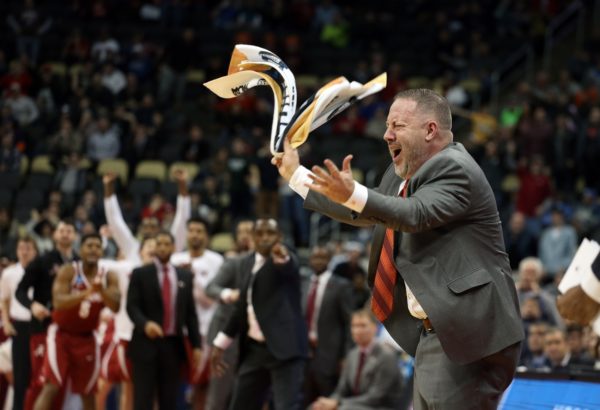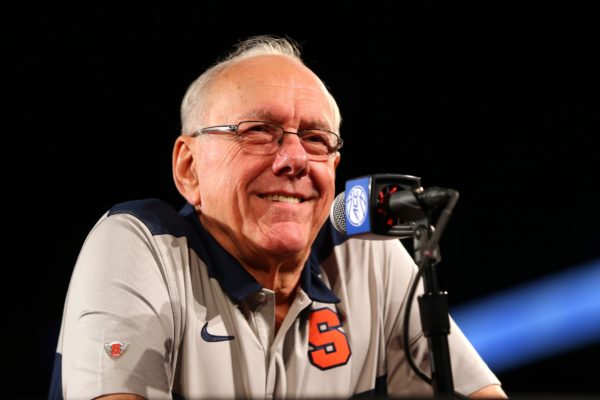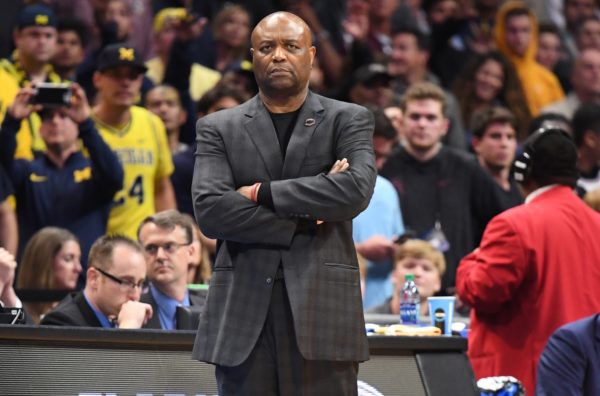ACC Burning Questions Part 4: Virginia Tech, Syracuse & Florida State
Posted by Matt Auerbach on November 1st, 2018As we head into another exciting ACC season, we will be reviewing the key question for each of the league’s 15 squads. Today Matt Auerbach (@mauerbach24) works into the upper tier, with Virginia Tech, Syracuse and Florida State.
Virginia Tech Burning Question: We know they’ll fill it up, but can the Hokies improve enough defensively to fulfill their potential?
Virginia Tech came out of the gates blazing a year ago, scoring more than 90 points in five of its first six affairs. And while the numbers understandably dipped as the competition toughened, the Hokies’ up-tempo, let-it-fly mentality, led to season marks of 28th nationally in offensive efficiency and sixth in effective field goal percentage. Lead guard Justin Robinson, the engine behind the high-powered unit, is back for his senior season, and pairs with sophomore sharpshooter Nickeil Alexander-Walker, as perhaps the most explosive backcourt in the ACC.
Robinson, a preseason all-ACC second team selection, is the model of consistency, and the type of point guard head coach Buzz Williams can trust to spearhead his attacking offense. An old-school point guard at his core, Robinson has developed in an old-school manner, as his three-point percentage, points, assists and steals per game have all steadily increased over his three years in Blacksburg. Another leap is a tall order for him after averaging 14.0 PPG, 5.6 APG and shooting nearly 40 percent from long-distance last season, but one that he may need to make given that senior Chris Clarke has been suspended from the team indefinitely. Clarke, the runner-up for ACC Sixth Man of the Year, was in line to start and become a major contributor. In his absence, the Hokies will need a healthy and productive Kerry Blackshear Jr. to replicate upon his excellent sophomore season. Coming off a redshirt year, the 6’10” Blackshear averaged just under 13 points per game on the back of a 63.4 percent true shooting rate. Without Clarke around to bolster the interior, he becomes the Hokies’ leading returning rebounder and will be relied upon to protect the rim.
In his first four years at Virginia Tech, Williams’ teams have never finished within the top 60 nationally in defensive efficiency. If this is to be the year that the Hokies break through and make a run in the NCAA Tournament, improvement on that end is absolutely necessary. There’s no doubt that this team’s offense will pressure opposing defenses, but seeking to outscore the opposition will only get a team so far.
Syracuse Burning Question: Can Syracuse make enough shots?
By any reasonable metric, the Syracuse offense last season was downright offensive — the Orange ranked 308th nationally in scoring, 331st in field goal percentage, 316th in three-point percentage and 324th in effective field goal percentage. However, despite a pedestrian 20-13 overall record and a sub-.500 league mark, the nation’s fifth-best defensive team somehow sneaked into the NCAA Tournament. Once there, Jim Boeheim‘s club did what it often does — the 2-3 zone tightened up, the scores were low, and the Orange made just enough shots to advance from the play-in game to the Sweet Sixteen (losing to Duke).
There should be no sweating out Selection Sunday in central New York this year, as the ACC’s leading returning scorer Tyus Battle opted to eschew the NBA in favor of his junior campaign. And if he didn’t have enough energy to go through the draft process, it would have been totally understandable. The national leader in percentage of his team’s minutes played at 96.2 percent, Battle never played fewer than 37 minutes in a contest after Thanksgiving week last season. It is certainly no wonder that he wore down late last year, failing to make more than half of his shots in 11 of the Orange’s final 12 games. Syracuse’s stark lack of depth a year ago also caught up to rising senior point guard Frank Howard and versatile rising sophomore Oshae Brissett, who ranked fourth and seventh, respectively, in percentage of minutes played. Howard, who can get out of control at times, took full advantage of his increased role, averaging more than 14 points per game and ranking among the top 100 nationally in assist rate (29.1%). Brissett, who is wonderfully dynamic and explosive on both ends, has the potential to vastly improve on a rookie campaign where he nearly averaged a double-double while leading the club in three-point percentage (33.1%).
Slovakian sophomore Marek Dolezaj, whose rapid improvement down the stretch was a key component to the NCAA Tournament upsets, will be counted on for major contributions from the outset. He, along with a pair of skilled freshman guards in Jalen Carey and Buddy Boeheim (yes, he is), will be tasked with creating a deeper rotation so that the big three have some gas left in the tank at the end of the season. For the last several years, Syracuse has lived around the bubble before putting together some nice postseason runs. Boeheim should have a team in place this year to make yet another deep run, just not from an upstart position this time around.
Florida State Burning Question: Do the Seminoles do anything great enough to get them over the hump?
Florida State’s surprising run in the 2018 NCAA Tournament ended just four points shy of the Final Four. Those three wins have created quite the preseason buzz in Tallahassee that this year’s Seminoles could be the first group in nearly 50 years to return the school to that hallowed ground. Are those expectations realistic, or did a small sample size of success create an illusion that an above-average team is something more substantial?
Similar to Syracuse, the Seminoles finished the ACC regular season at 9-9 and entered the NCAA Tournament with a respectable but not outstanding 20-11 overall record. There were a few illustrious moments, including a home win over North Carolina and a thrashing of Florida, but it was a relatively nondescript season for Leonard Hamilton‘s team until the two-week run in March. That said, Florida State returns most of its major contributors from that squad, including leading scorer Phil Cofer, who was granted a sixth year of eligibility by the NCAA. Second leading scorer and leading rebounder Terrance Mann, who has become the alpha figure on the team, is also back, along with leading assist man Trent Forrest. Seminoles’ fans are also excited about the return of uber-talented sophomore MJ Walker, who scored seven points per game as a rookie in fewer than 19 minutes per outing. A major expansion of his role should lead to significantly heightened production from the former five-star recruit.
The Seminoles are deep, experienced, athletic and versatile. They will compete hard for Hamilton, as they always do, but do they have enough talent to finish as a top-tier team in a loaded ACC? We shall see. But, as colleague Brad Jenkins noted last month, the Seminoles are attacking this season as though they have unfinished business ahead of them rather than resting on the laurels of a suprise run to the Elite Eight. That attitude alone may be reason enough to believe that Florida State has figured itself out and will be even better than it was a year ago.












































